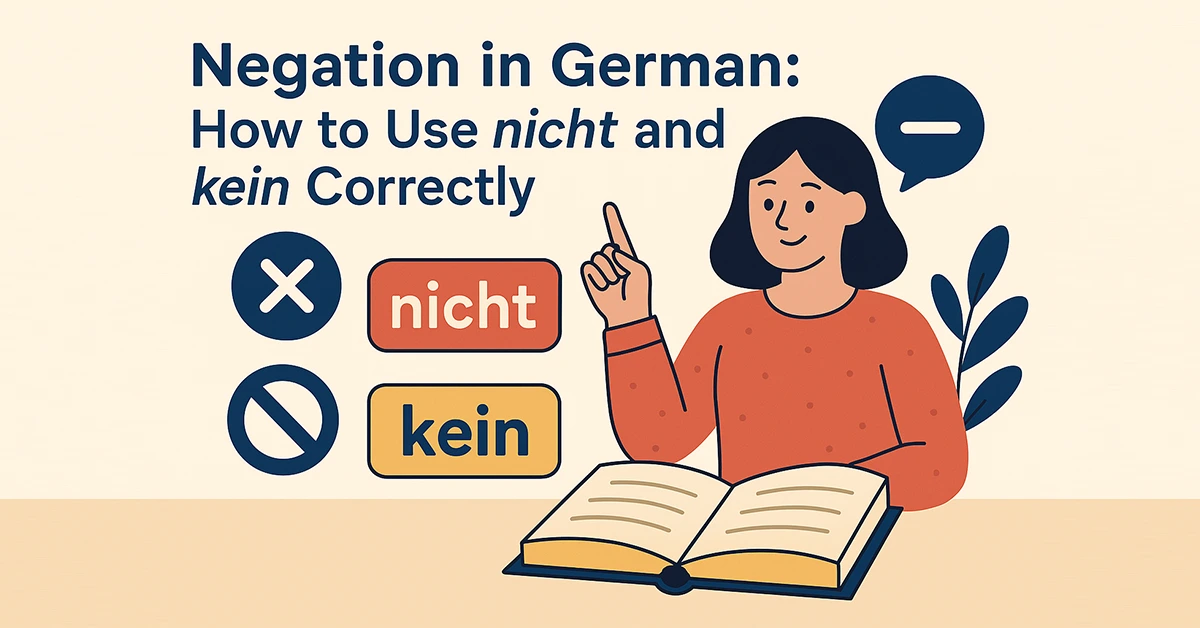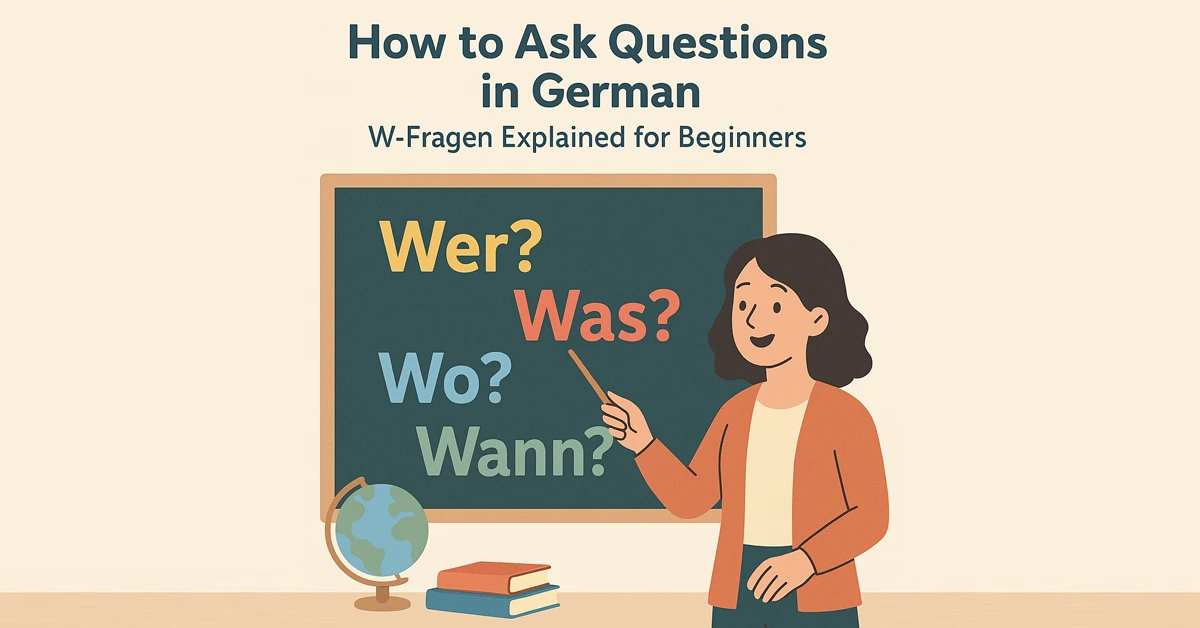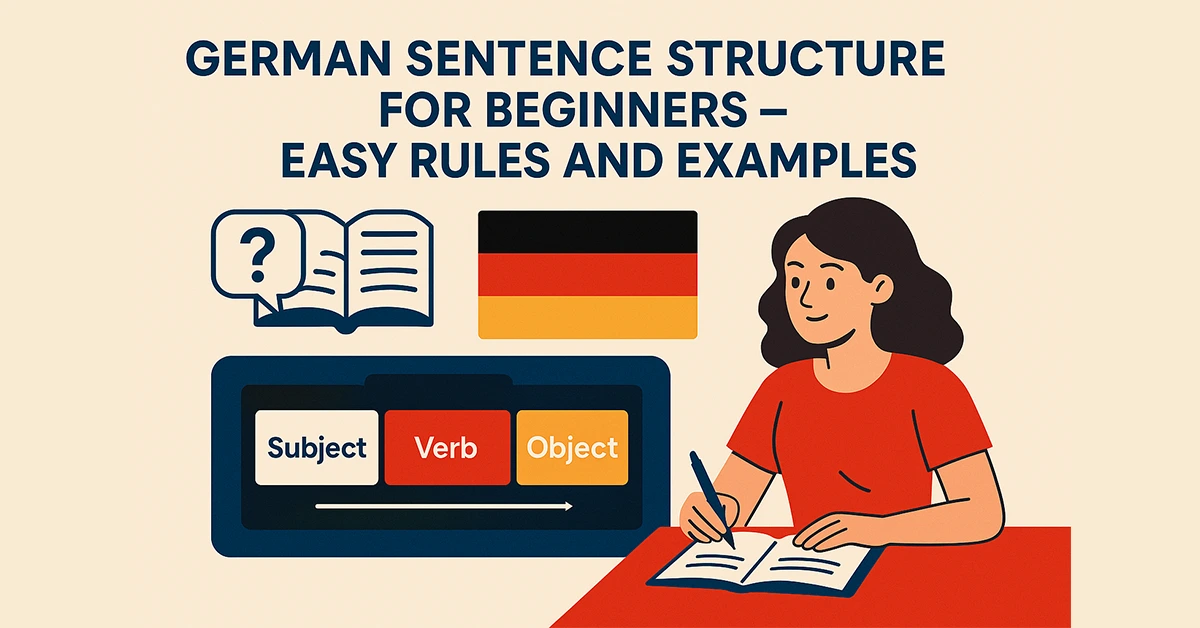german sentence structure
-

German Word Order: Main vs Subordinate Clauses Explained Simply
Learn how German word order works in main and subordinate clauses. This guide explains clear rules, real examples, and key tips to master sentence structure.
-

Negation in German: How to Use nicht and kein Correctly
Learn how to use nicht and kein in German with clear explanations, real-life examples, and practical tips. Master German negation step by step in this guide.
-

Ask Questions in German – W-Fragen Guide + Free PDF
Learn how to ask questions in German with W-Fragen like wer, was, wo, wann. Beginner-friendly grammar rules, real examples, and practice tips included.
-

German Sentence Structure for Beginners – Easy Rules & Examples
Learn German sentence structure step by step with clear examples and grammar rules. Master word order, verb placement, and build accurate sentences easily.